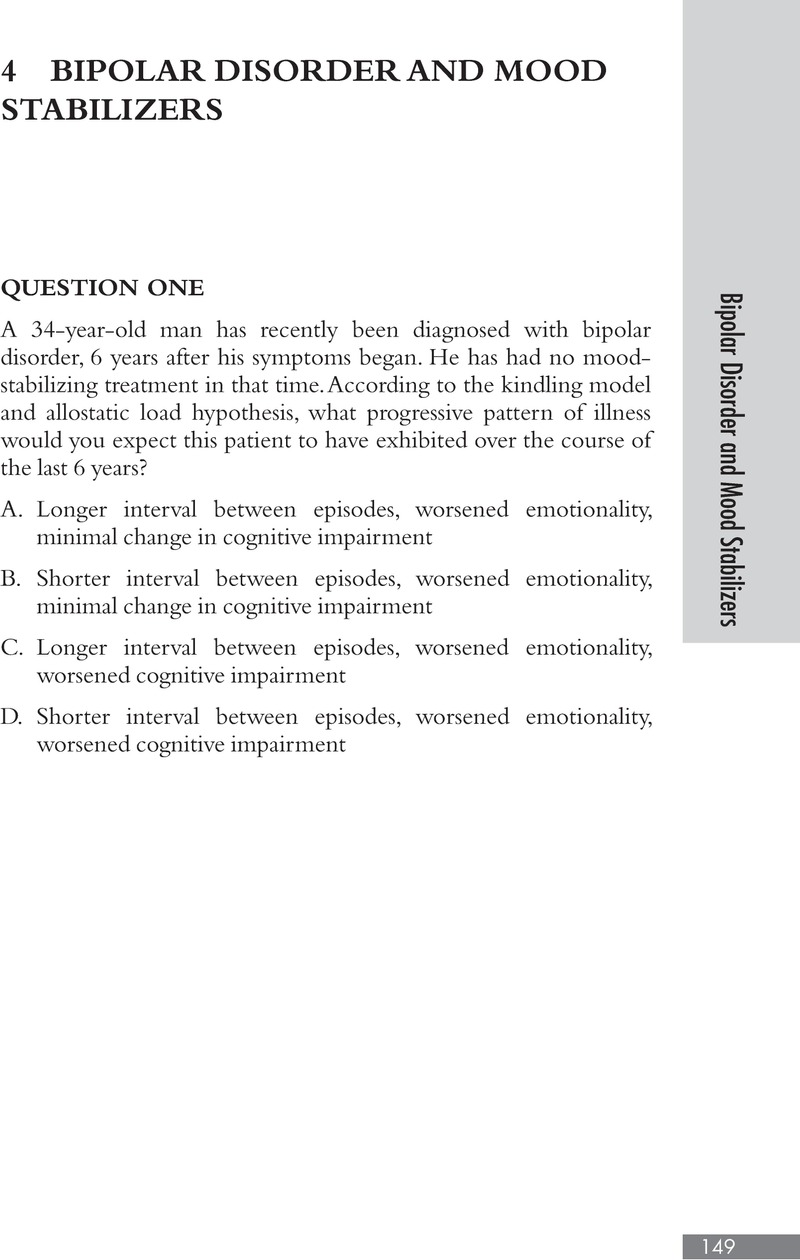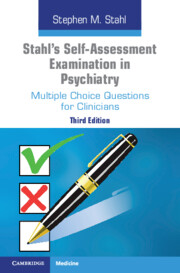Book contents
- Stahl’s Self-Assessment Examination in Psychiatry
- Stahl’s Self-Assessment Examination in Psychiatry
- Copyright page
- Contents
- Introduction/Preface
- CME Information
- 1 Basic Neuroscience
- 2 Psychosis and Schizophrenia and Antipsychotics
- 3 Unipolar Depression and Antidepressants
- 4 Bipolar Disorder and Mood Stabilizers
- 5 Anxiety Disorders and Anxiolytics
- 6 Chronic Pain and its Treatment
- 7 Disorders of Sleep and Wakefulness and Their Treatment
- 8 Attention Deficit Hyperactivity Disorder (ADHD) and its Treatment
- 9 Dementia and Cognitive Function and its Treatment
- 10 Substance Use and Impulsive Compulsive Disorders and their Treatment
- Optional Posttests and CME Certificates
- Index
- References
4 - Bipolar Disorder and Mood Stabilizers
Published online by Cambridge University Press: 19 October 2021
- Stahl’s Self-Assessment Examination in Psychiatry
- Stahl’s Self-Assessment Examination in Psychiatry
- Copyright page
- Contents
- Introduction/Preface
- CME Information
- 1 Basic Neuroscience
- 2 Psychosis and Schizophrenia and Antipsychotics
- 3 Unipolar Depression and Antidepressants
- 4 Bipolar Disorder and Mood Stabilizers
- 5 Anxiety Disorders and Anxiolytics
- 6 Chronic Pain and its Treatment
- 7 Disorders of Sleep and Wakefulness and Their Treatment
- 8 Attention Deficit Hyperactivity Disorder (ADHD) and its Treatment
- 9 Dementia and Cognitive Function and its Treatment
- 10 Substance Use and Impulsive Compulsive Disorders and their Treatment
- Optional Posttests and CME Certificates
- Index
- References
Summary

- Type
- Chapter
- Information
- Stahl's Self-Assessment Examination in PsychiatryMultiple Choice Questions for Clinicians, pp. 149 - 196Publisher: Cambridge University PressPrint publication year: 2019



